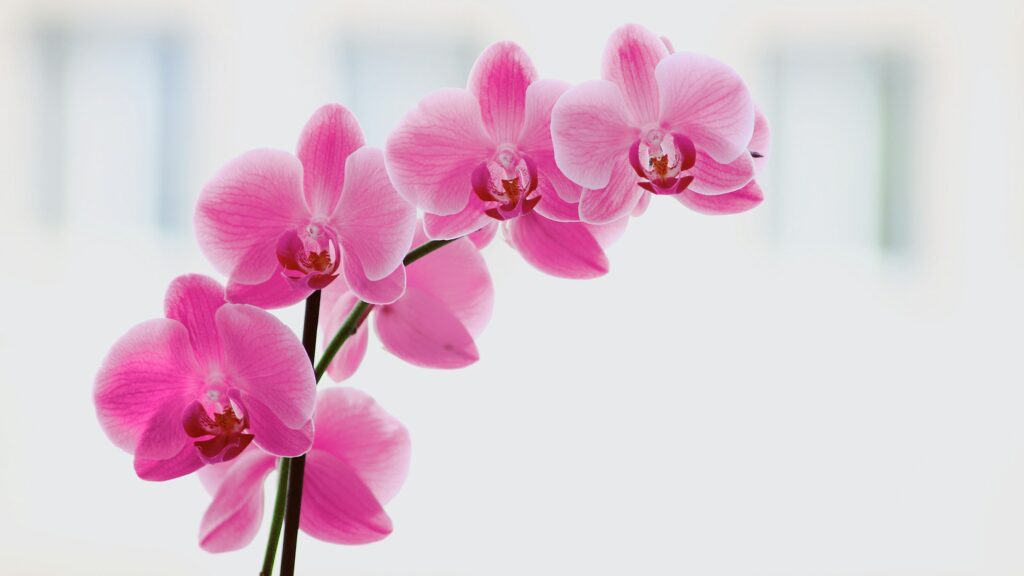Orchids, with their diverse forms, colors, and fragrances, offer an endless canvas for creativity in garden design. While each orchid species possesses its own unique charm, combining different species can elevate your garden to new heights of beauty and intrigue. However, achieving successful fusion requires careful planning and execution. In this guide, we’ll explore techniques for seamlessly integrating different orchid species in your garden, creating harmonious displays that delight the senses and captivate the imagination.

Understanding Orchid Compatibility
Before embarking on your orchid fusion journey, it’s crucial to understand the compatibility of different orchid species. Some orchids naturally thrive together, sharing similar environmental requirements and growth habits, while others may compete for resources or inhibit each other’s growth. Researching the specific needs and behaviors of each orchid species is essential for selecting compatible combinations.
Layering and Vertical Gardens
One effective technique for combining different orchid species is through layering and vertical gardening. Utilize various levels within your garden space, such as hanging baskets, trellises, or wall-mounted containers, to create vertical layers of orchids. This approach not only maximizes space but also allows for unique interactions between different species, with cascading blooms creating stunning visual displays.
Creating Microclimates
Orchids originate from diverse ecosystems around the world, each with its own unique climate conditions. To accommodate the specific needs of different orchid species, consider creating microclimates within your garden. Utilize shading, misting systems, and strategically placed rocks or other structures to regulate temperature, humidity, and light levels, providing optimal growing conditions for each orchid variety.
Companion Planting
Companion planting involves pairing orchids with other plant species that complement and support their growth. Choose companion plants with similar cultural requirements and growth habits to create cohesive and visually appealing arrangements. Additionally, select plants that bloom at different times of the year to ensure continuous color and interest in your garden.
Orchid Communities
Create communities or clusters of orchids within your garden, grouping together species that naturally grow in close proximity in their native habitats. Mimicking natural ecosystems fosters symbiotic relationships between orchid species, promoting mutual support and enhancing overall garden health. Experiment with different combinations to discover harmonious groupings that thrive together.
Interplanting and Underplanting
Interplanting involves strategically placing different orchid species within the same planting bed or container, allowing them to coexist and interact with one another. Consider factors such as growth habit, bloom time, and color palette when selecting combinations for interplanting. Underplanting involves adding smaller orchid species beneath taller varieties, creating layers of texture and interest within your garden beds.
Hybridization and Crossbreeding
For those seeking to push the boundaries of orchid diversity, hybridization and crossbreeding offer endless possibilities for creating new and unique orchid varieties. Experiment with controlled pollination techniques to combine desirable traits from different orchid species, resulting in hybrid offspring with novel characteristics. While hybridization requires patience and expertise, the rewards of creating your own orchid hybrids are truly satisfying.
Seasonal Rotation
To maintain a dynamic and ever-changing garden display, consider implementing seasonal rotation strategies. Swap out orchid species as they finish blooming, replacing them with varieties that are just coming into flower. By carefully planning your plantings, you can ensure a continuous cycle of color and interest throughout the year, keeping your garden vibrant and engaging.
Maintenance and Monitoring
Regular maintenance and monitoring are essential for the success of your orchid fusion garden. Keep a close eye on the health and growth of each orchid species, adjusting care practices as needed to accommodate changing conditions. Prune spent blooms, remove dead or diseased foliage, and provide supplemental fertilization and water as required to keep your orchids thriving.
In conclusion, combining different orchid species in your garden opens up a world of creative possibilities, allowing you to design unique and captivating displays that showcase the beauty and diversity of these remarkable plants. By employing techniques such as layering, companion planting, and hybridization, you can create harmonious orchid communities that flourish and evolve over time. With careful planning, experimentation, and attention to detail, your orchid fusion garden will become a source of endless inspiration and delight for years to come.
